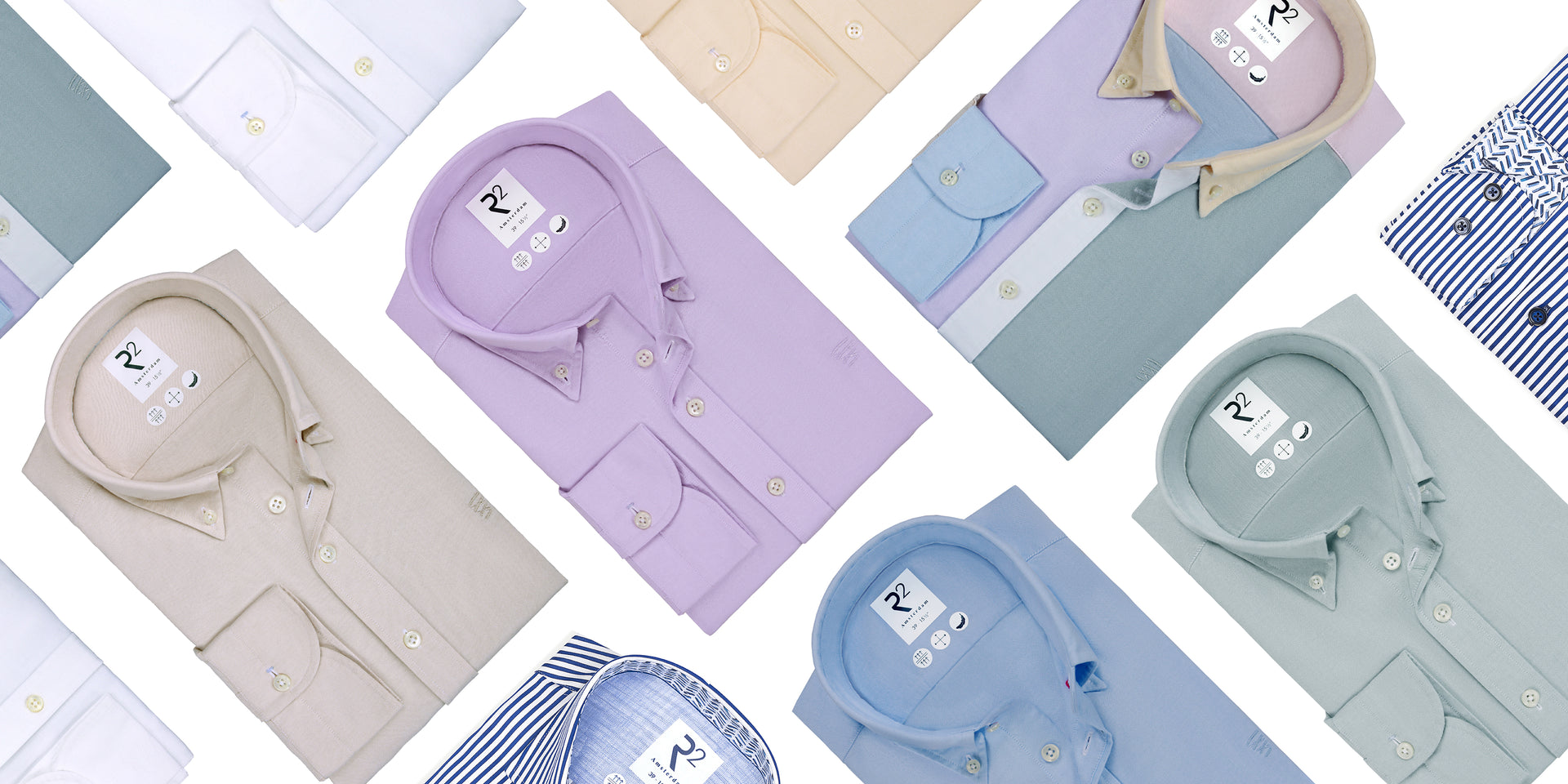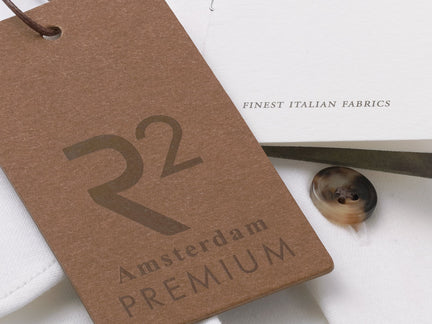The oxford weave is actually not originally from Oxford, but from Scotland. One of the first shirt manufacturers there named different types of weaves after the most important British universities, including Oxford. Of four different weaves, only the oxford weave has stood the test of time. And we at R2 understand why: oxford fabrics are beautiful in their simplicity, yet luxurious and versatile at the same time.
Probably the simplest weave we can all picture in our minds is the plain weave. It consists of single horizontal and vertical threads woven crosswise into a fabric. Oxford is a popular version of this. Instead of single threads, it uses double threads. We also call this the Panama weave or basketweave. The result is a more pronounced check pattern in the fabric, which gives oxford shirts their sporty, casual look.
Oxford is woven from cotton threads. It is a strong, relatively thick, wear-resistant and therefore durable fabric. Regular oxford is somewhat heavier than other fabrics and is therefore especially suitable for autumn and winter. Since the fabric is barely see-through, it is also a good choice if you like to wear a T-shirt underneath your shirt.
The connoisseur, however, knows that regular oxford also has its lighter weight, more formal and elegant siblings. Pinpoint oxford, for example, is a type of weave that combines one horizontal thread with two vertical ones. In addition, pinpoint oxford is often made from thinner threads, creating a finer fabric that looks more formal and is a bit more versatile than regular oxford.
An even more luxurious variant bears the promising name of royal oxford. Royal oxford is characterized by a staggered patterning; the basketweave follows a two-three-two pattern, which gives the fabric its typical relief. Royal oxford is a very tight weave too. This results in a lightweight, soft, supple and smooth fabric that resembles silk. Because of its beautiful shine, Royal oxford is mainly used for very formal shirts.






